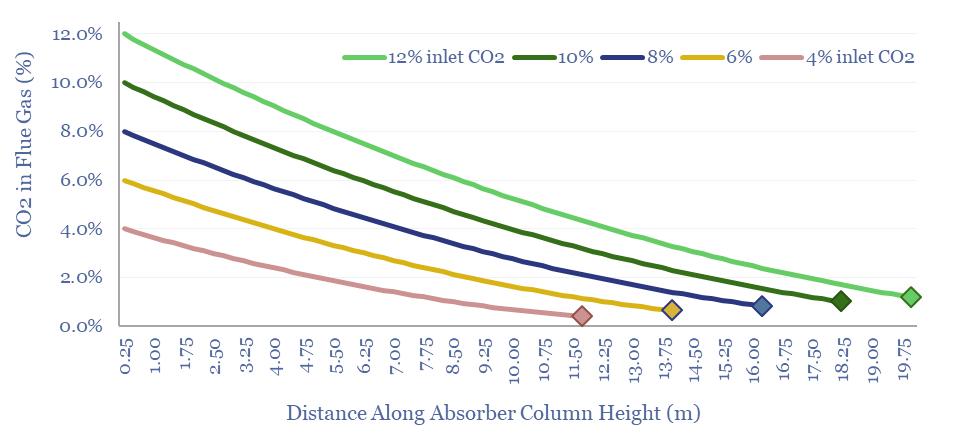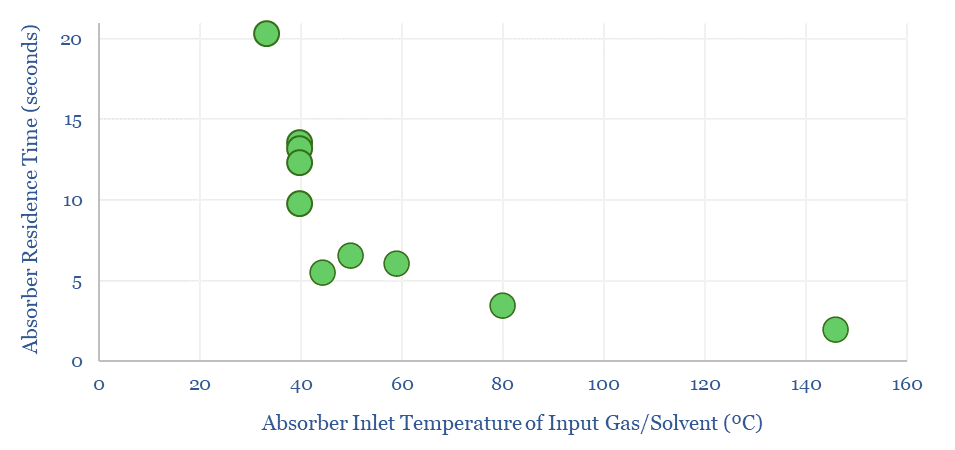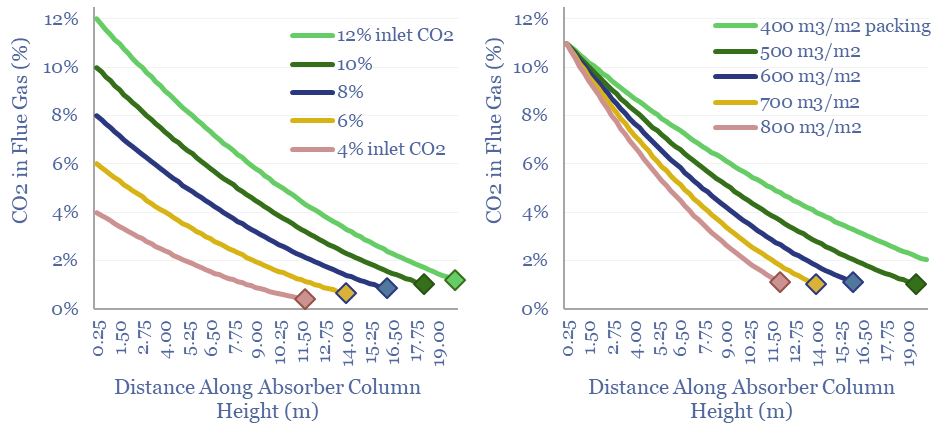Post-combustion CCS plants flow CO2 into an absorber unit, where it will react with a solvent, usually a cocktail of amines. This data-file quantifies operating parameters for CCS absorbers, such as their sizes, residency times, inlet temperatures, structural packings and the implications for retro-fitting CCS at pre-existing power plants.
Post-combustion CCS aims to capture the CO2 from pre-existing industrial facilities and power plants, by flowing exhaust gases upwards through an absorber unit, while a solvent simultaneously flows downwards and reacts with the CO2. Costs, energy penalties and leading solvent candidates are covered in our CCS research.
But how hard is it to find space for these absorber units at pre-existing industrial facilities? This data-file has compiled key parameters from various technical papers, most aiming for 90% capture rates.
Across a dozen CCS examples in the data-file, each m/s of inlet gas requires 7 m3 of absorber capacity. Hence the absorber units for a world-scale 500MW power plant can reach 3,000 – 10,000 m3 of volume, usually across 2-4 absorbers with 10-15m diameters and 15-25m heights.
For the ultimate space requirements of the CCS plant, multiply by 2-5x, for the desorbers, utilities, piping and balance of plant.
This model calculates the size of the absorber unit required, as a function of height, diameter, residency time, CO2 inlet concentration, CO2 capture rate, solvent properties and structural packing.
Generally larger absorber units are required at industrial facilities with higher CO2 inlet concentrations and lower target CO2 levels.
For example, removing 90% of the 4%-concentrated CO2 from our base case natural gas burner requires a 12m absorber. Absorbing 90% of the 12%-concentrated CO2 from a coal boiler requires a 20m absorber.

The average residency time within a CCS absorber is below 10-seconds. Although the number depends on the unit size, flow velocity, amine quality and temperature. These can all be flexed in the data-file.

Smaller and less expensive absorbers are possible with faster-acting amines, shorter residency times and greater structural packing.
A listed mid-cap company based in Switzerland was often mentioned in technical papers, with a product range of packing materials that can achieve 200-1,200 m2/m3 of internal surface area to promote gas-liquid exchange and slim-line CCS absorbers.
